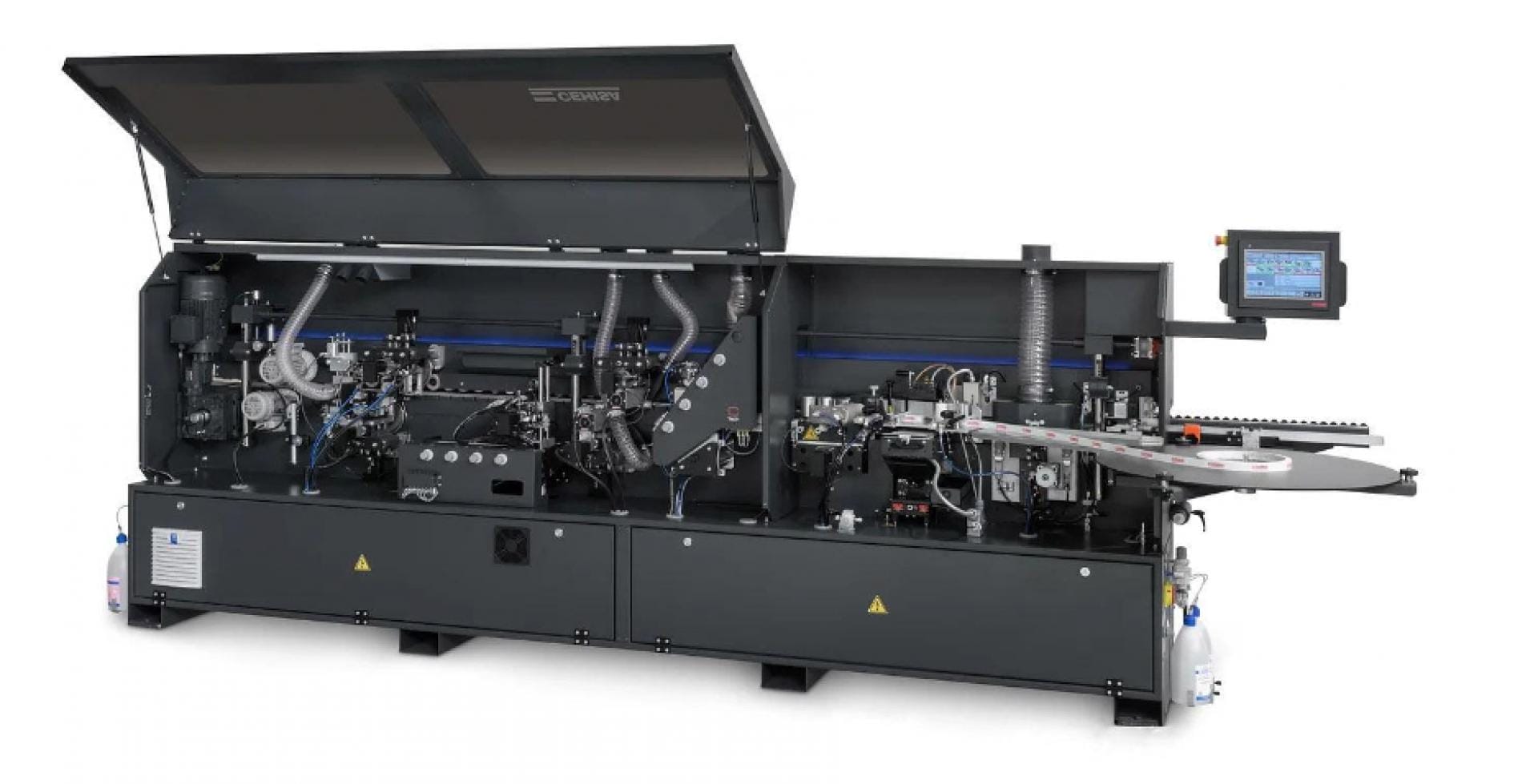For any woodworking businesses that manufacture signs, cabinets, tables and most other wood-based products, panel saws are vital tools that are used to cut large panel sheets into smaller panels that can then be used to craft products like the ones prior mentioned.
With a horizontal panel saw and a sliding table, cutting the workpiece involves the material being equipped to the sliding table which is then directed towards the blade. Panel saws without a sliding table perform the same function but with more positioning, measuring and general labouring involved. All types of panel saws can typically process materials such as solid wood, plywood, MDF, melamine and others.
Horizontal panel saws and vertical panel saws both perform very similar functions but with slight variations. Neither one really has the upper hand against the other since both have pros and cons which make them suitable for different types of workshops and craftsmen.
With two different forms, both horizontal panel saws and vertical panel saws are available.
Vertical Panel Saws – These can be fitted onto walls and are designed to occupy minimal space. This makes them an excellent choice for small workshops that are conscious of the amount of space they’re using. Although vertical panel saws (wall saws) are more conservative with space and are generally cheaper than horizontal panel saws, they don’t quite have the same versatility.
Horizontal Panel Saws – These are the panel saws which come in table form and can also be highly suitable for larger (or mid-sized) workshops that have more demanding workloads and require a greater degree of precision and versatility. They take up more floor space than a vertical panel saw and are usually more expensive. Yet compensating for their size, these saws are capable of processing 200mm thick workpieces whereas vertical panel saws are usually limited to 80mm. Horizontal panel saws can also be equipped with additional, optional features that can significantly improve the functionality and flexibility of the machine.
At RJ Woodworking Machinery, we stock a huge range of panel saws. Most of our panel saws are supplied by SCM who ensure that each machine is designed and engineered with the utmost care. Each saw features high-end components that are compacted into modern, ergonomic tables.
PART EXCHANGE
Our part exchange service will make it easier for you to exchange both your new and used machinery.
Finance Solutions
No matter your financial situation, we are on hand to help you find the best finance solutions for your needs.
Why Would I Need a Panel Saw?
A panel saw is a specialised type of saw that is designed for cutting large, flat panels of wood. If you are working on a project that involves cutting a lot of panelling, then a panel saw can save you a lot of time and effort. Panel saws are available in both portable and stationary models, and they can be either hand-operated or motorised. Panel saws typically have a large cutting table that supports the panel as it is being cut. The table may also have guidelines to help you keep the panel straight as you cut it. Some panel saws also have a scoring blade that can be used to score the panel before it is cut, which can help to prevent the panel from splintering.
Vertical Panel Saws Vs Horizontal Panel Saws
There are two main types of panel saws: vertical panel saws (wall saws) and horizontal panel saws (standard panel saws). As their names suggest, the difference between these two types of panel saws lies in their orientation. A vertical panel saw is positioned so that the blade runs vertically up and down, while a horizontal panel saw has a blade that runs horizontally from side to side. Because of this difference in orientation, each type of panel saw has its own strengths and weaknesses.
Vertical panel saws are typically more compact and therefore easier to manoeuvre than horizontal panel saws. They also tend to be less expensive. However, because the blade is positioned vertically, vertical panel saws can only make rip cuts (cuts that run parallel to the grain of the wood). Horizontal panel saws, on the other hand, can make both rip cuts and cross cuts (cuts that run perpendicular to the grain). Horizontal panel saws are also less likely to vibration than vertical panel saws, making them ideal for precision work. However, they can be more difficult to control, and they typically take up more space than vertical panel saws.
OUR BRANDS
ALL BRANDS
We have hundreds of products from top-quality brands to shop from.

NEW PRODUCT
The XPERT Series combines versatility and compactness with the integration of C-motion technology that provides the highest end finish and maximum accuracy of adjustment.